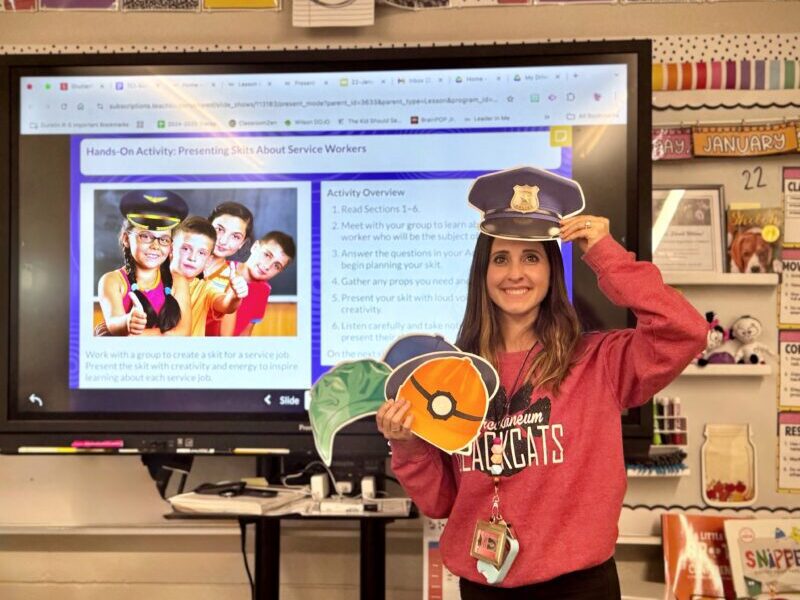
Social Studies Alive! integrates language arts instruction with social studies, providing many opportunities for elementary students to practice reading, writing, speaking and listening, and language skills. Literacy instruction is built into the programs’ rich expository text, notebook questions, and activities.
Reading
Reading is an integral part of Social Studies Alive! From well-structured informational text to primary source passages, there are many opportunities to build reading skills.
- Comprehending Informational Text Each lesson includes several sections of purely informational text. The Social Studies Stories in each unit blend literary and informational style text to engage students.
- Scaffolded Text Complexity As students progress through Social Studies Alive!, they will read increasingly sophisticated text. The program’s text complexity increases through the grade levels. Within each grade level, the text complexity varies throughout the program to ensure that there is challenging text for all students.
- Text Analysis Students respond to questions using evidence from the text. Questions throughout the program require a clear understanding of the main ideas and other details provided in the reading.
Writing
Students have many opportunities to write throughout the program. Assignments range from answering short-form questions to constructing long-form arguments.
- Variety of Writing Tasks From the earliest grades, Social Studies Alive! students practice three types of writing—writing to persuade, writing to inform or explain, and writing to convey experience. For example, when they respond to questions, students enjoy the challenges of writing about a personal experience related to the lesson, creating timelines, and writing song lyrics.
- Using Evidence for Support Students are expected to use evidence appropriately to support their analysis, reflections, and research. They are given support in identifying key details which will serve most effectively as evidence. They also reflect on the role evidence plays in the social sciences and argument in general.
Speaking and Listening
Discussions and presentations are built into Social Studies Alive! Students hold small group and whole class discussions and engage in civil discourse.
- Structured Academic Conversations The teaching strategies in Social Studies Alive! provide varied grouping techniques, resulting in a balance of paired, small group, and whole class discussions in which students reflect on their experiences and understanding of the activities. These discussions are designed to build clear communication skills that are critical to success in social studies and for college and career readiness.
- Civil Discourse Cooperative classroom conventions emphasized throughout all of TCI’s curricula encourage students to respond to and build on ideas and arguments presented by other students. During discussions, Social Studies Alive! guides students to compare and contrast relevant experiences across the four disciplines of social studies.
Language
Students develop a strong command of English and build academic and social studies vocabulary through reading and activities.
- Scaffolded Vocabulary Social Studies Alive! has a progression of increasingly sophisticated vocabulary built into it. Key terms are used throughout a lesson or the year without overwhelming students with too many unfamiliar words. Every component of Social Studies Alive! makes use of the vocabulary and includes activities to help solidify comprehension.
- Vocabulary Development Social Studies Alive! vocabulary terms are previewed at the beginning of the lesson, and students complete vocabulary development assignments, such as a Word Parts Log, that trains students to parse words to infer meaning.
- Grammar, Punctuation, and Spelling Throughout all parts of Social Studies Alive!, students are expected to demonstrate command of the conventions of written and spoken English. An Editing and Proofreading Checklist is included to help students write with minimal errors.


